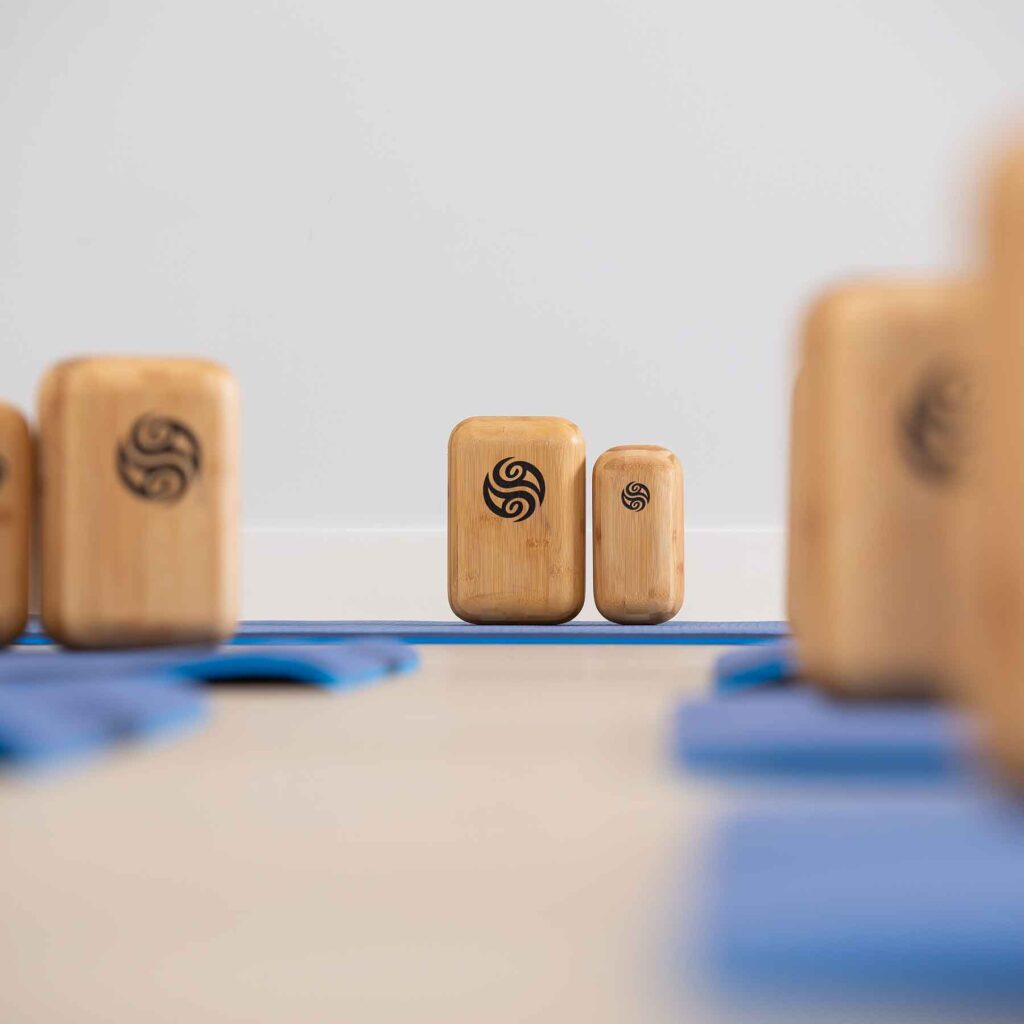Fascia Bands

If a body is perfectly aligned lifelong, where every cell is positioned in its rightful space, the fascia would have the proper equilibrium of collagen and elastin throughout the body. This would allow for “effortless effort” with standing and movement. Like a new sponge, it could be twisted and squished but would always resume to its initial alignment. People, however, are not perfectly aligned. We fall into the internal spaces within from the constant pull of gravity and unconscious living.

Although everyone is unique in their specific alignment, there are fault lines that will be the first to give in the body. These are areas where there is a natural collapse, like at the waist, where there is no bone to hold us in position, at the neck, around the eyes, as well as the joints. These are natural give points that allow us to move in specific ranges so we can have a body that is a solid structure that can keep us upright, but also that can move freely in life.
As the eyes rest in the front of the head, they are largely responsible for our forward collapse. People spend a lot of time looking down, especially since technology changed our daily habits. I remember Quinn and I were on a zoom call one day and he shared that he saw one of his neighbors walking down the sidewalk – he is a blind man. He commented on his incredible posture and how upright he is – that spoke volumes.
As time takes us through life, we start to slip forward at the fault lines. If there is no conscious correction for this, the collagen in the fascia migrates to these vulnerable spaces to create a barricade. The more you slip forward, the more collagen builds up. These are the Schultz/fascia bands. In the beginning, this would hardly be noticed, but in time this can create several pains and issues. Essentially, the migration of this protein is squeezing the life out of the cells in the front of the body, leaving an area of hard, dense tissue which has no elasticity or space. Gravity grips to this density, drawing the body more forcefully into this collapse, accelerating with time.
The collapse is also not linear. The downward pull of gravity, combined with the twisting in the body from being dominant on one side, cause you to spiral. As the body has many fault lines, joints or areas of collapse wind down in one direction, with a counter rotation occurring at the next fault line. This all happens naturally as we adapt to maintain our ability to be upright. And - in between the fault lines - there is chaos of the fascia patterns, like you would see with smoke leaving a pipe. At the source of heat, smoke leaves in a wave, but as it moves further from the heat source, it begins to spiral, ending in a chaotic pattern.
This is what we are dealing with in the fascia – general overall chaos, with false walls and floors built from collagen to create stability. Unfortunately, this takes away space for flow and causes the fascia and all it contains (which is everything), in the front of the body to be rigid. Inflammation is continually sent to repair but doesn’t have the energy from the conscious breath to heat up the proteins to rebuild tissue, causing additional pressure and adding stagnancy and acidity.

The back of the body, responding to this forward collapse, is on a hyper stretch. As it attempts to hold the body in an upright position, tension and fatigue persist, for some, continually. Imagine how fatigued you would be if you walked around with 20-pound weights in both hands for years. The compensations that would result mirror to some degree what happens in slow motion as you move through time in your body, with unconscious posture and breath. Where the fault lines shift and compress, in the back there is ballooning and exhaustion. This is a body lacking balance, but that is portrayed as a normal part of aging in society.
Even more concerning is the fact that the youth are aging at hyper speed. With technology capturing them in early childhood, they are developing with a more forceful collapse which has created interesting shifts in their overall alignment. The build-up of the false walls and floors are thicker and denser, and their bodies are more twisted. The impact this will have on their health is apparent already, but to be seen as time moves forward.
This is where my passion comes from to keep moving forward with teaching fascia decompression. Just because we are in this predicament doesn’t mean there isn’t a solution. To be able to put the space back into those areas of collagen build-up and allow the migration of this protein to its rightful place is what this work does. In doing so, balance is restored allowing for optimal space around the cells. This creates the ease of flow needed to support cell health.
To learn more about fascia decompression, click here to receive a gift - our Sampler Program which will share the process using a rolled-up towel. Begin now to start creating change for tomorrow.
Listen to this week's episode of The Fascia Masters below.
Breathe & Believe,
Deanna
Follow us on our social channels below to learn more about Block Therapy and see some amazing transformations!






Responses